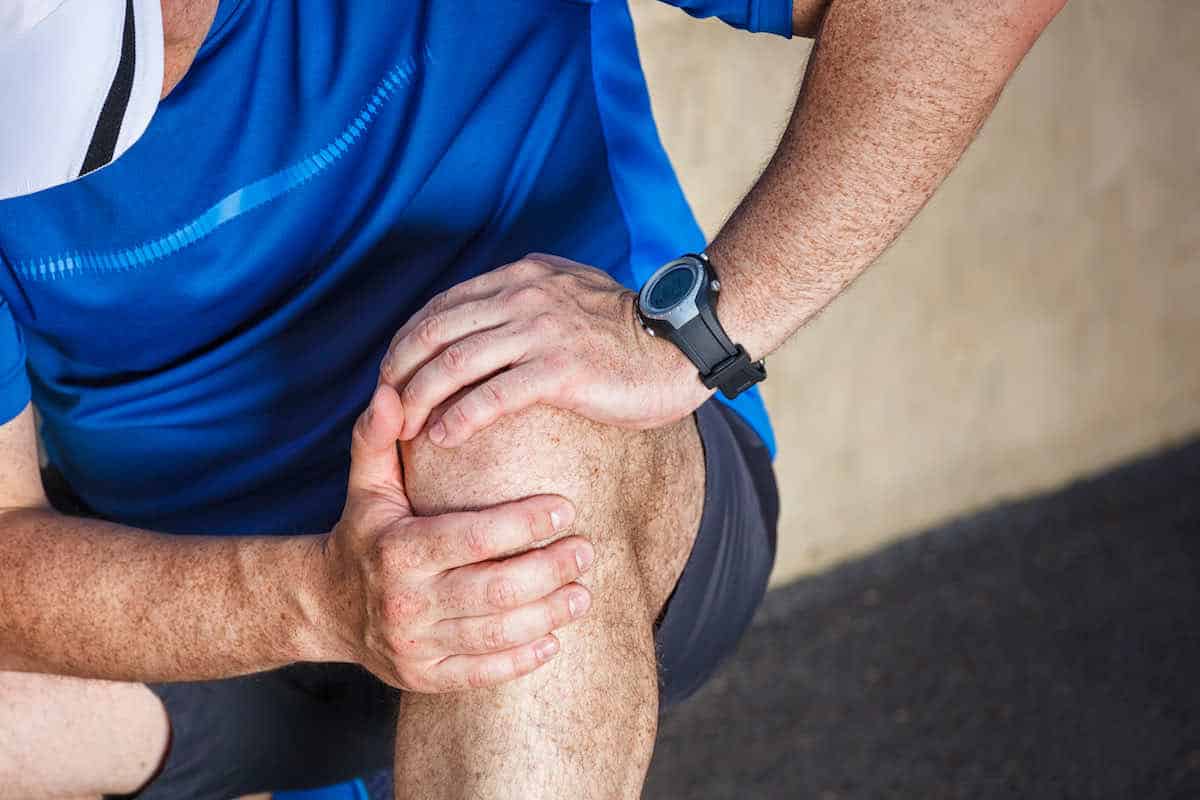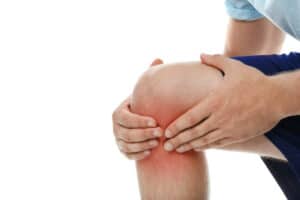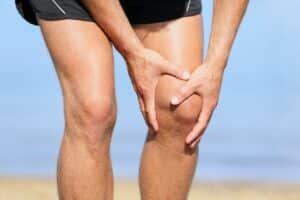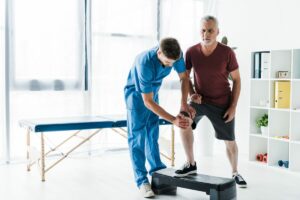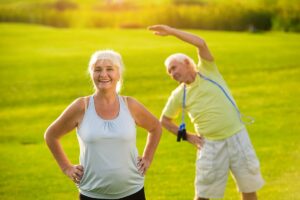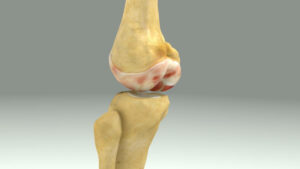Free download: Top 10 Natural & Easy Remedies for Joint Pain from Home. Learn these helpful remedies.
Estimated Reading Time: 8 minutes read
Plica Syndrome is a condition that, while it may not be common knowledge, can significantly impact individuals who experience it. It involves a particular part of your knee, specifically a fold in the knee lining, known as the plica. There are typically four of these folds in the human knee, and they usually exist without causing any issues. However, when one of these folds, often the one located in the middle of the knee, becomes irritated or inflamed, it can lead to Plica Syndrome.
A range of symptoms, such as knee pain, swelling, and a feeling of instability in the joint, can characterize this condition. As it commonly affects the plica located in the middle of the knee, it’s often referred to as medial plica syndrome. Although it might seem complex, understanding Plica Syndrome is the first step to managing it effectively and finding relief from its symptoms.
Table of Contents
Who is Affected by Plica Syndrome?
Plica Syndrome is not exclusive to a particular group of people; it can affect anyone regardless of age or fitness level. However, it is more commonly seen in individuals who are actively engaged in sports activities, especially those involving significant knee movements such as running or cycling. This is likely due to the fact that these activities can cause strain or overuse of the knee, potentially leading to the inflammation of the plica.
In fact, according to various medical experts, it’s estimated that about 10% of the population could experience Plica Syndrome at some point in their lives. But it’s also important to note that it can be caused by other factors apart from sports. For instance, an injury resulting from a fall, a car accident, or any other form of trauma that affects the knee can also result in Plica Syndrome.
Symptoms and Impact of Plica Syndrome
When it comes to the symptoms, Plica Syndrome primarily manifests as pain in the knee. But alongside this pain, individuals with Plica Syndrome may also experience swelling in the affected knee and a reduced range of motion. One characteristic symptom of Plica Syndrome is a clicking or popping sound that occurs when the knee is bending or extending.
Plica Syndrome can also lead to feelings of instability, especially when navigating slopes or stairs. Certain activities requiring knee bending, such as squatting or climbing stairs, might cause the pain to intensify. Furthermore, individuals might find it challenging to stand after being seated for a long duration, as this might trigger a catching sensation in the knee.
In some cases, people with Plica Syndrome might even be able to feel the swollen plica when they press on the area around their kneecap. Despite these challenges, it’s important to remember that there are ways to manage Plica Syndrome effectively, beginning with understanding the condition thoroughly.
Initial Steps and Treatment
Now that you have some background about Plica Syndrome, let’s dive into how you can deal with it. Initially, the aim is to reduce inflammation. Picture your inflamed knee as a temper tantrum; your job is to calm it down.
Firstly, let’s bring in the ice, the hero in our inflammation battle. Applying an ice pack to your knee for about 15-20 minutes can help soothe the inflammation.
Next, it’s time to take some load off your knee. Try to limit weight-bearing activities and give your other leg its moment in the spotlight. This could also be a great time to settle down with a good book or binge-watch that series you’ve been meaning to catch up on.
Lastly, consider over-the-counter pain medication. But remember, always consult your doctor or pharmacist before starting any new medication. They would be the best people to guide you on this.
Kickstarting Your Recovery with Gentle Exercises
With inflammation under control, it’s time to introduce some gentle exercises. But remember, the key word here is ‘gentle.’ Here are some exercises that can help:
1. Heel Prop
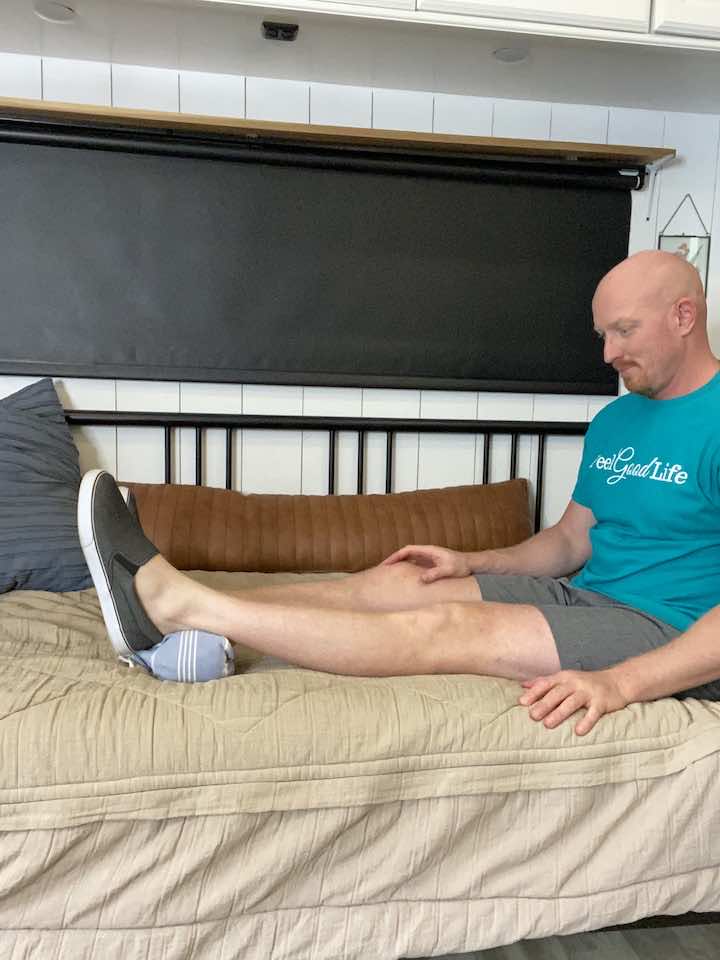
- Start by sitting on your bed with your back supported and your legs stretched out in front of you, or you can also perform this laying down on your bed or couch.
- Then, place a towel under your heel so it is propped up.
- The next step is to relax your leg in that position while your knee extends.
- Maintain this position for 30 seconds.
- Perform these steps for a total of 3 sets.
2. Heel Slides with Rope
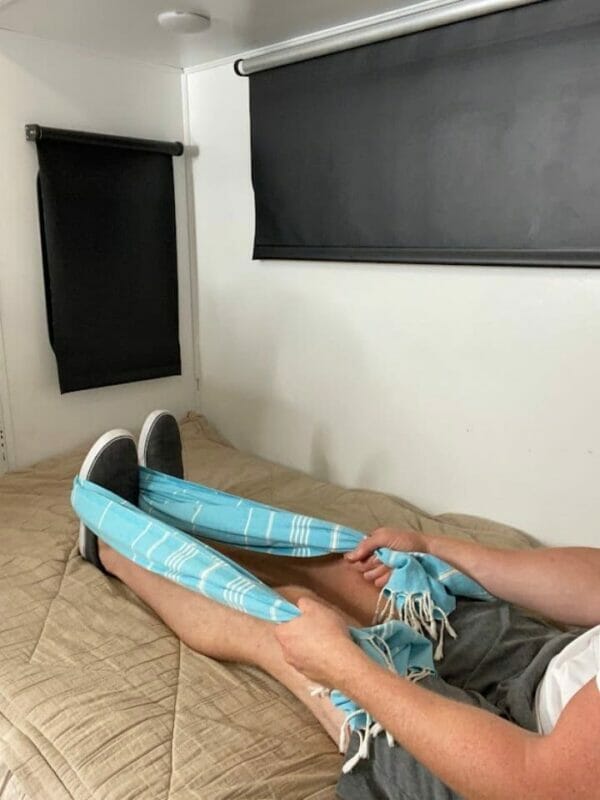
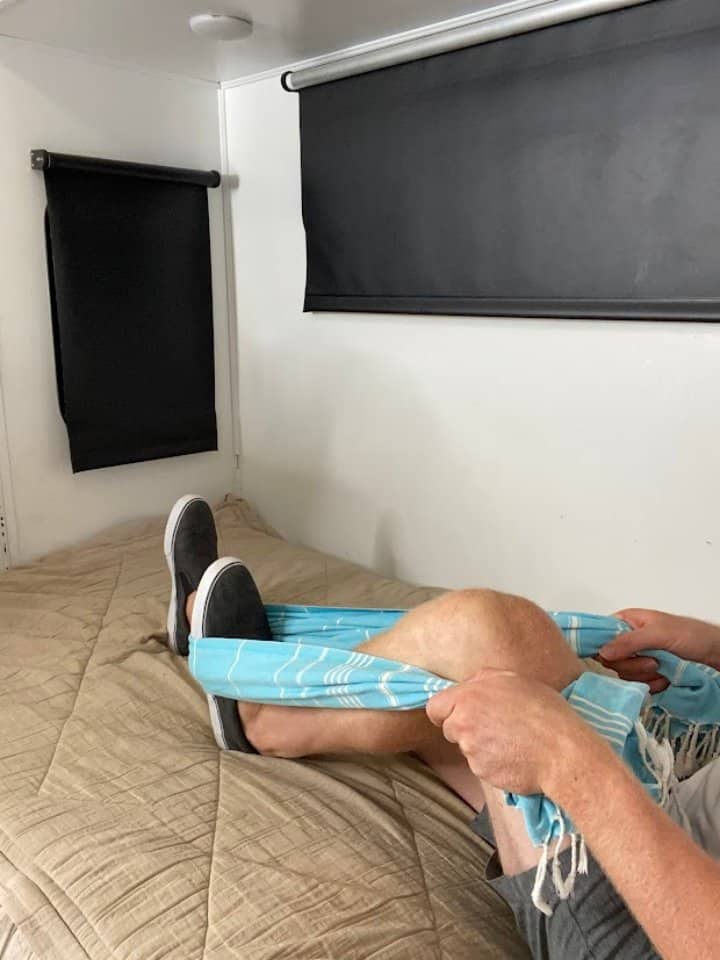
- Starting position: Sitting or laying down with the injured leg in front of you (can be on the floor, couch, or bed).
- Wrap a non-elastic strap around the foot.
- Pull on the strap with the arms to slide the heel towards the bottom while simultaneously bending the knee.
- Hold for 5 seconds, then return to your starting position.
- Repeat 10 repetitions for 3 sets.
3. Seated Towel/Pillow Press
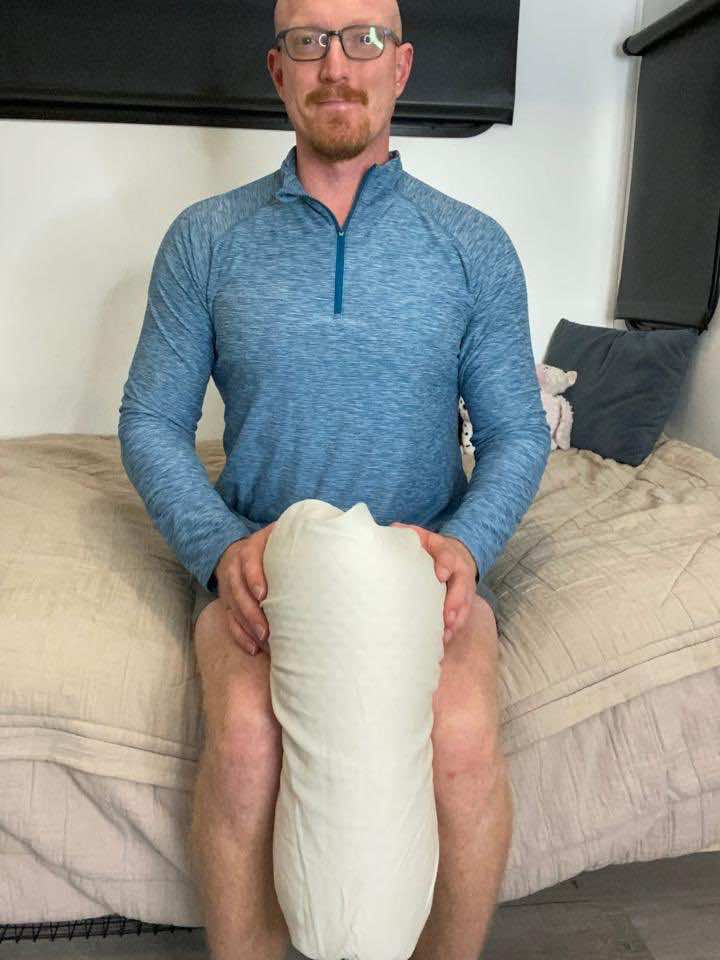
- Sit up straight, and grab either a pillow or rolled towel. Place the item under one leg, directly behind the knee.
- Rest your back against the headboard or lean back onto your hands if needed.
- While keeping good posture, press your knee into the towel/pillow for 5 seconds before relaxing.
- Repeat 2 sets of 10 repetitions on the same leg, then switch!
Long-Term Strengthening and Stretching
Once your knee is comfortable with these exercises, you can move on to the strengthening and stretching phase. This is where you condition your knee for the long run, building muscle strength and promoting flexibility. The exercises include:
1. Full Leg Lifts
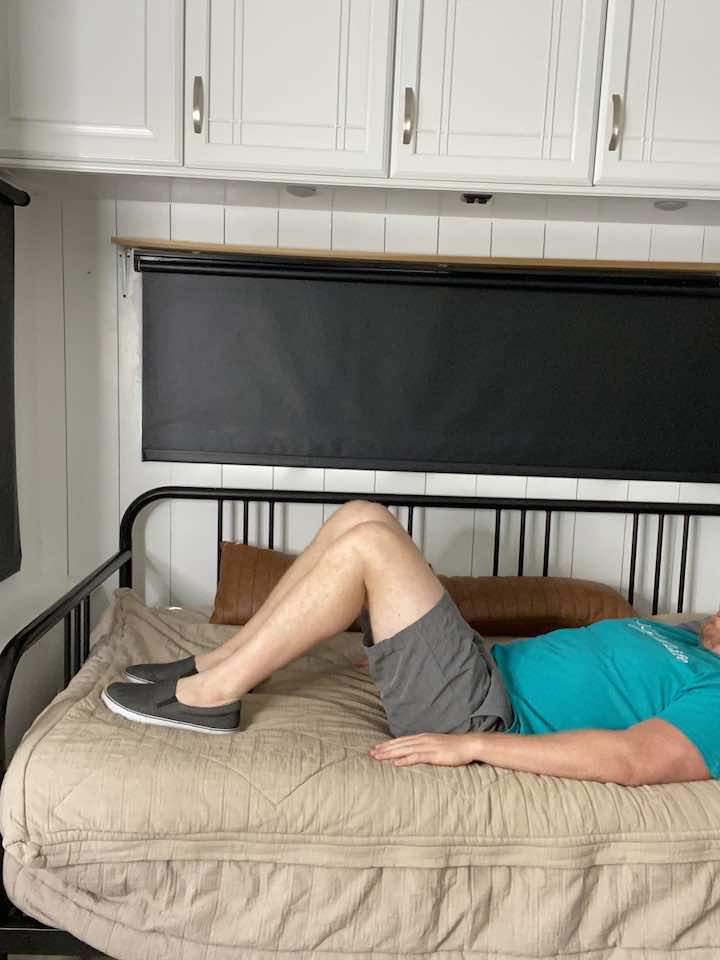
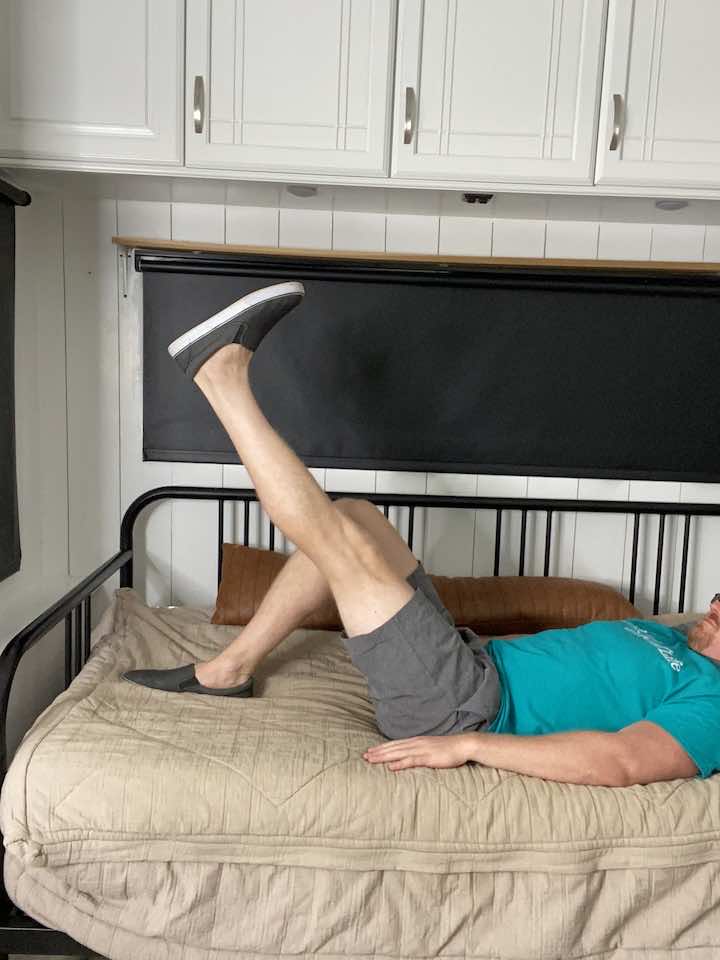
- Lie on your back with one leg bent and the other leg straight and together.
- Lift your straight leg up towards the ceiling, raising your buttocks off the floor.
- Slowly lower your leg back down, stopping just above the floor. Hold for 5 seconds briefly.
- Repeat the movement for 10 repetitions and 3 sets.
2. Side Lying Hip Adduction
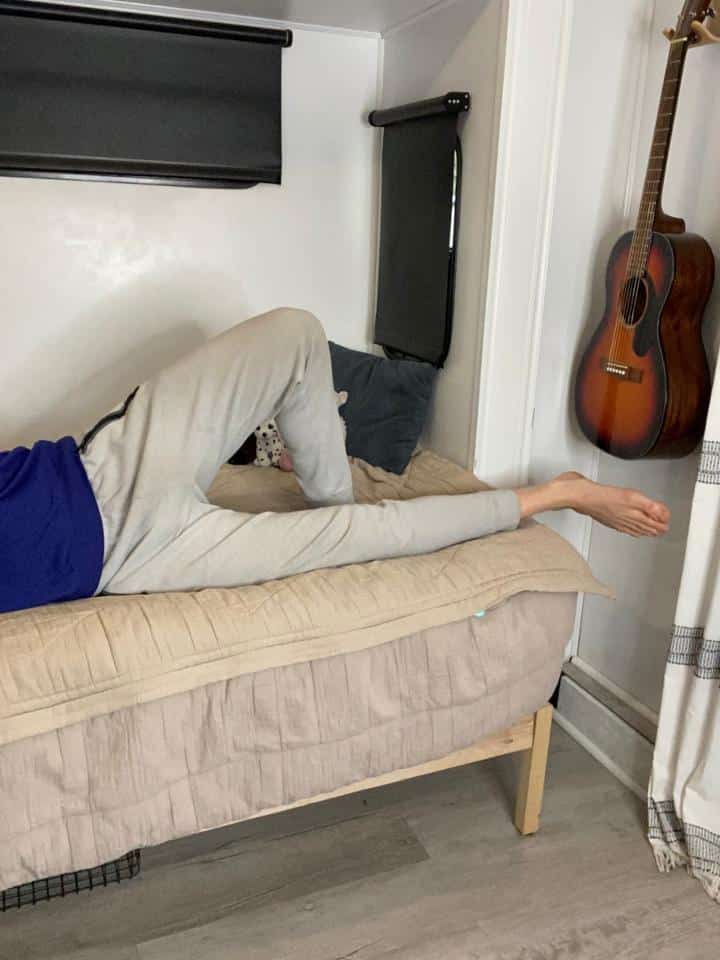
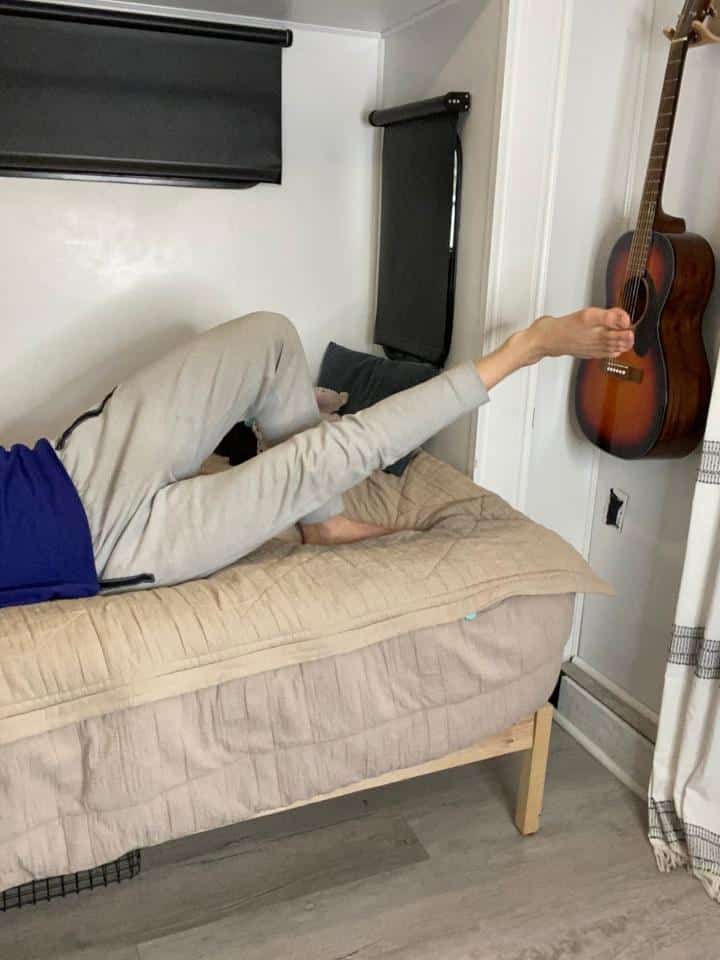
- Lie on your side with your top leg bent and your bottom leg straight and positioned slightly in front of the top leg.
- Ensure that the foot of your bottom leg is pointing straight forward.
- Lift your bottom leg a few inches off the floor, controlling the movement.
- Lower your leg back down to the starting position.
- Repeat this leg lift for 10 repetitions.
- Complete 3 sets of leg lifts on each side.
- Focus on engaging your inner thigh muscles throughout the exercise.
3. Side Leg Lifts
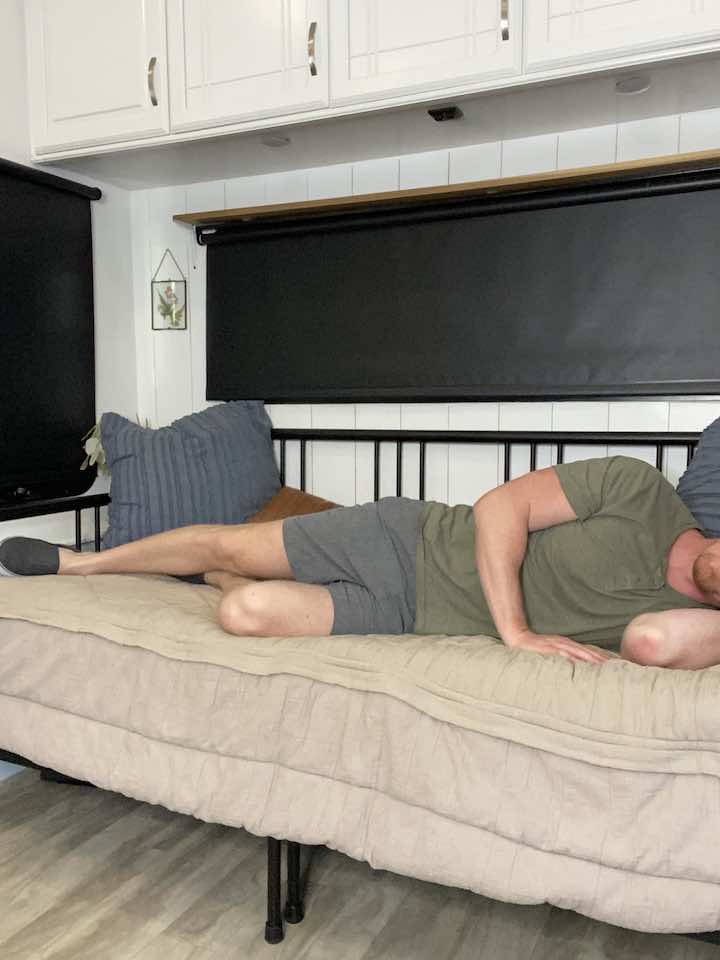
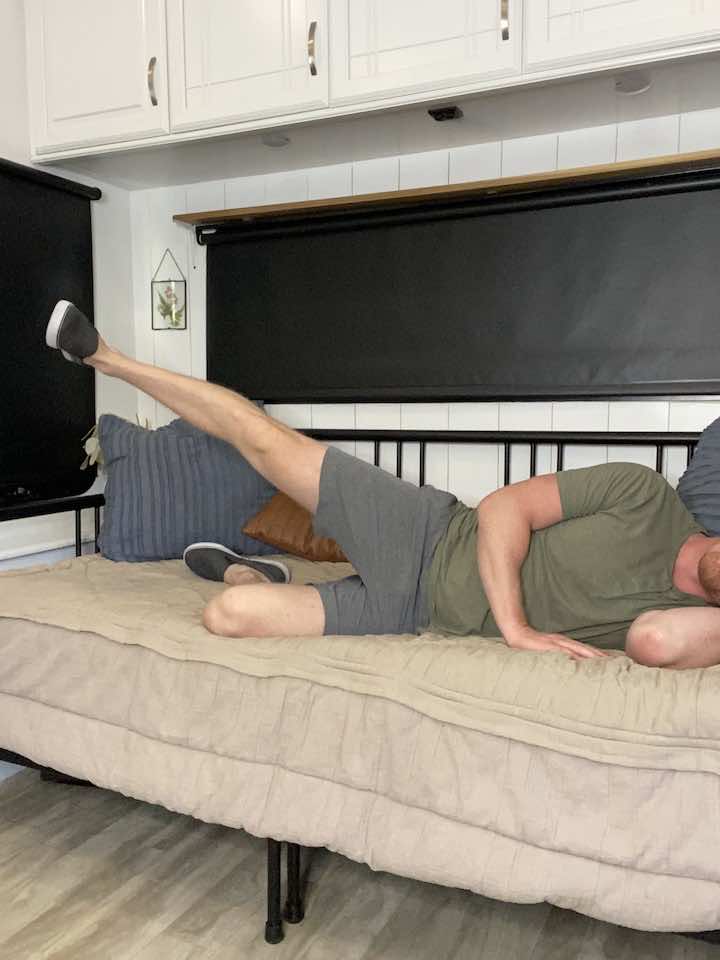
- Lie on your side with legs bent at a 90-degree angle
- Keep your feet and spine in line and your core tight
- Slowly raise the top leg to hip level
- Lower your leg back to starting position.
- Then repeat for 10 repetitions and 3 sets.
4. Clamshells
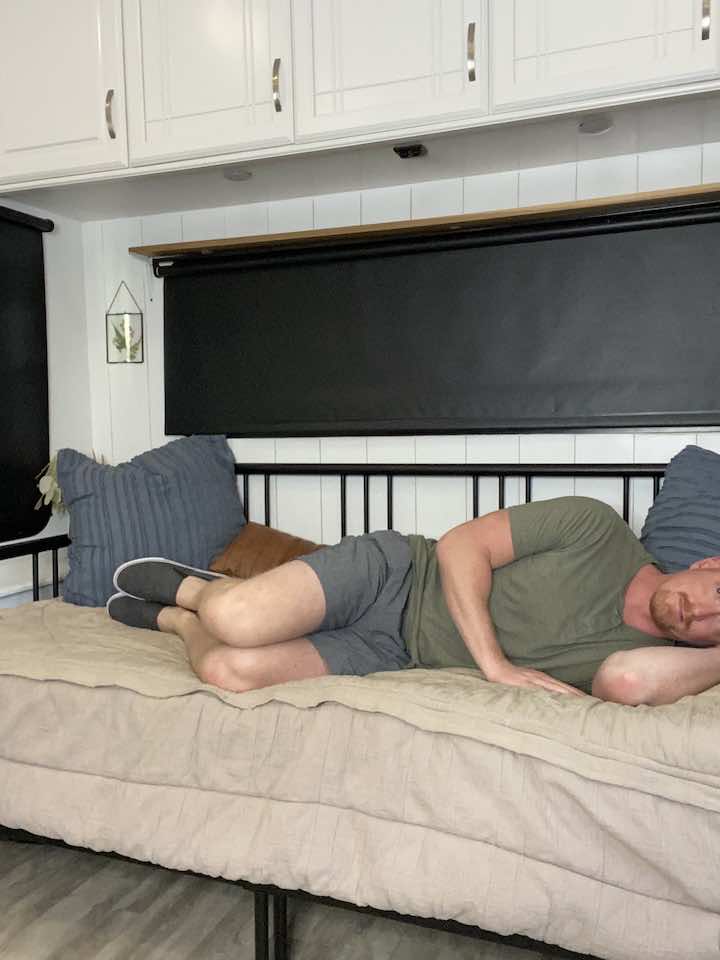
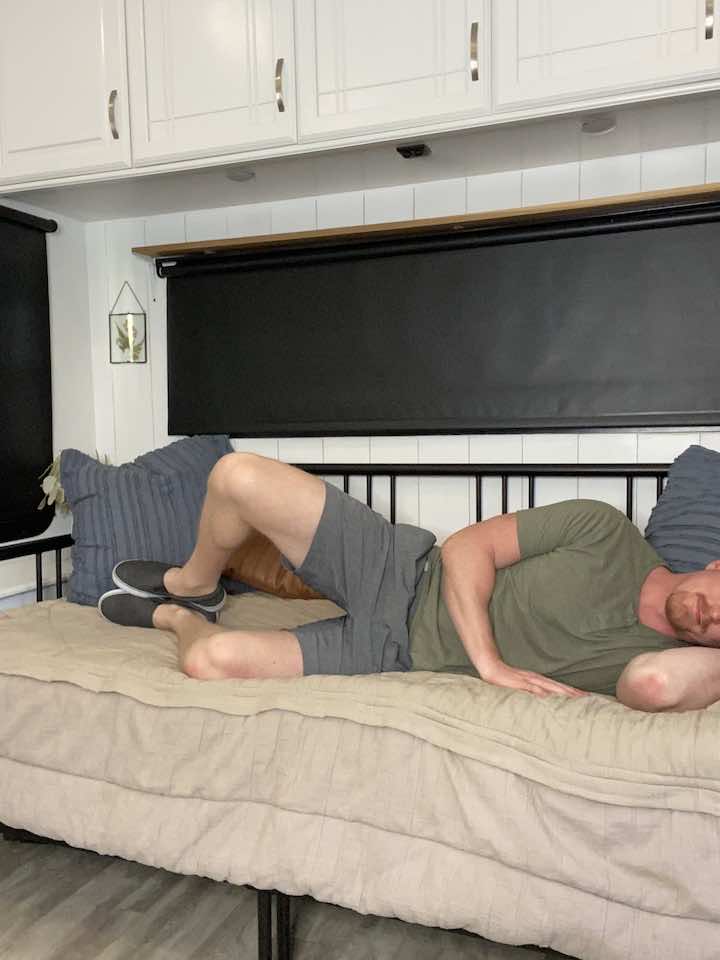
- Start by laying on your side with both knees bent.
- Keep your feet in contact with each other, and then rotate your top leg up. Ensure you keep your spine aligned and your hips don’t rock back! The rule of thumb is to do a smaller range of motion if you think your back is moving.
- Rotate your top leg back down to the starting position.
- Do this exercise 10 times in each set.
- Complete 3 sets of the exercise.
5. Standing Hip Extension
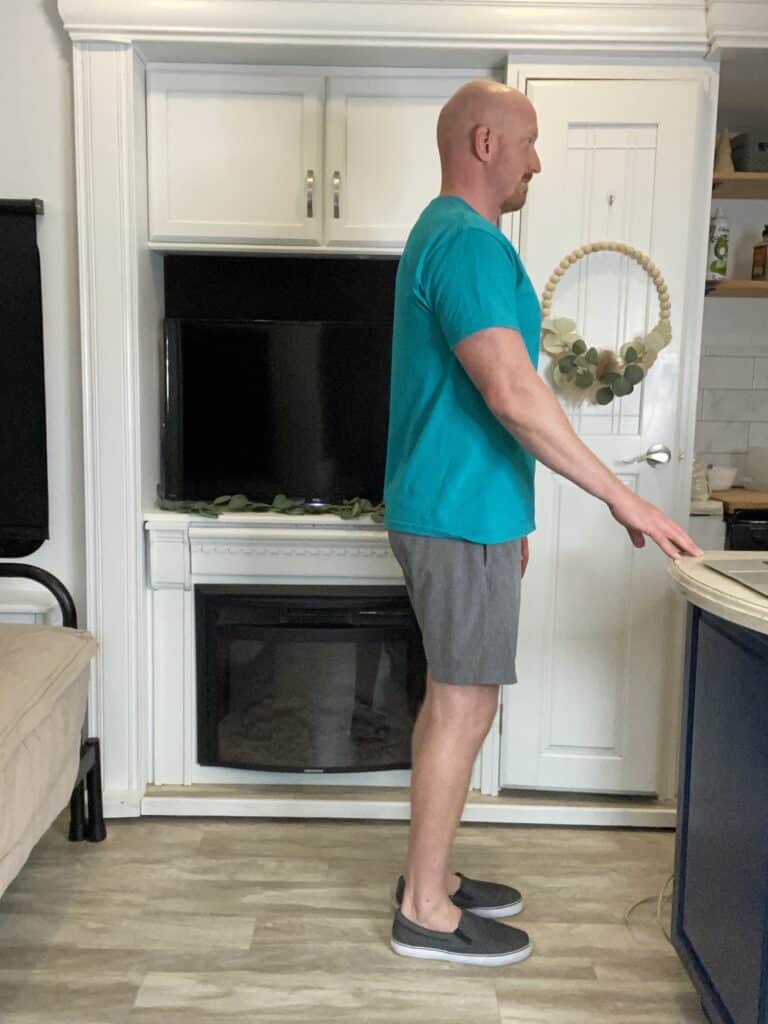
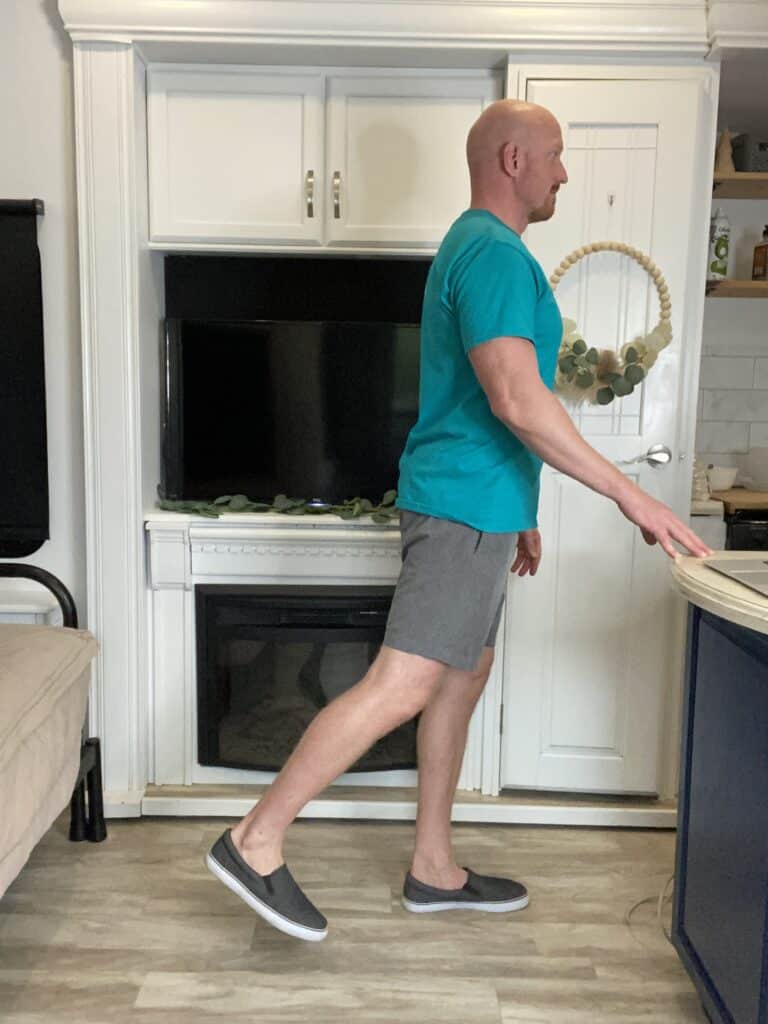
- Stand tall with your hands placed on a steady surface, such as a counter, sink, or chair (without wheels), to hold onto for balance.
- Shift your weight onto your left leg, keeping a slight bend in your left knee to avoid locking it out.
- Keeping your toes pointed forward and your right leg straight, lift your right leg back a few inches.
- Lower your leg back down to the starting position.
- Repeat this movement for 10 repetitions on each leg.
- Do a total of 3 sets of this exercise.
6. Standing Hamstring Curls
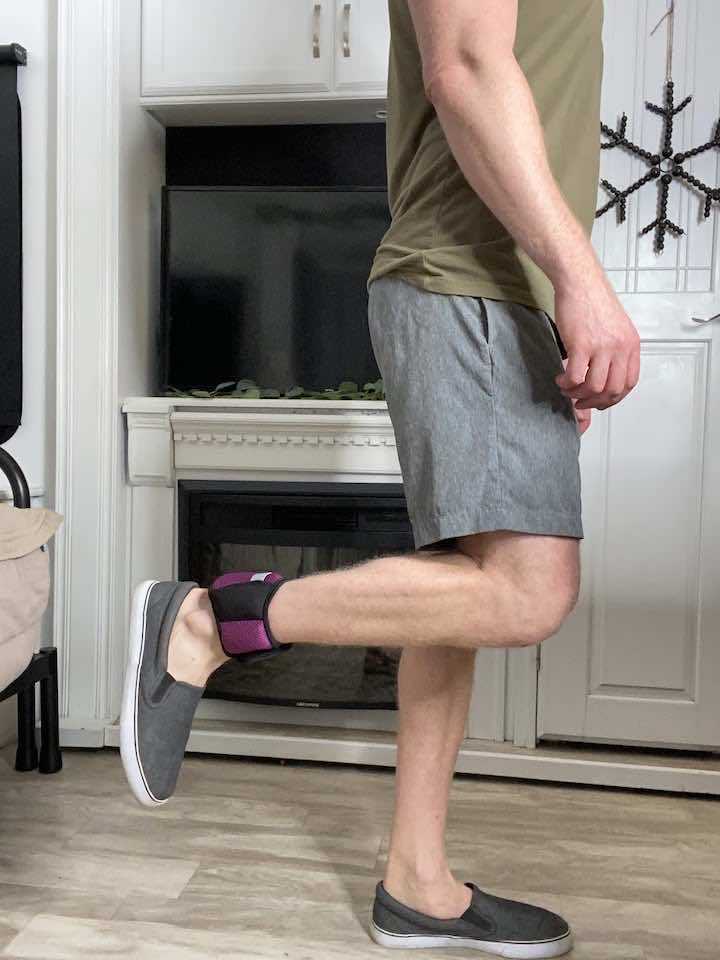
- Use 2-3 lb. ankle weights or tie a resistance band around your ankles.
- Stand in front of a sturdy surface, such as a countertop, for support.
- Bend one knee, allowing your foot to kick up towards your bottom.
- Return to the starting position.
- Repeat this movement 10-15 times for 2-3 sets.
- Practice this exercise on both legs.
Conclusion
You’re doing fantastic so far; if you’ve made it this far, you’re already on the road to recovery. Remember, our bodies are amazing healers, and with a little bit of time and effort, you’ll be back to your usual self.
Plica Syndrome may have thrown you a curveball, but with these exercises and tips, you’re well-equipped to hit it out of the park. So, here’s to your journey toward recovery – take it one step at a time, listen to your body, and most importantly, keep your spirits high! You’ve got this!


